Author Lois Winston on Cozy Mystery Books vs. the Mind-boggling World of Minecraft
By Lois Winston

Image by InoxyBuild from Pixabay
There was a time when I enjoyed fantasy, science fiction, and even some horror. The summer before ninth grade, I discovered The Lord of the Rings trilogy and read all three books within a few weeks. The books of Ira Levin, Arthur C. Clarke, and Tom Tryon filled my spare time throughout high school and into college, in-between assigned literary works like Moby Dick and The Bell Jar.
I also like to think that I have a decent knowledge of current events and trends, although I have no interest in following most of those trends. I can still kill it on Jeopardy most nights, though I’ll admit, the answers aren’t coming at the same rapid speed they once did. The brain is a muscle, and with the inevitability of growing old, all muscles, no matter how much you exercise them, start slowing down with age.
But then there’s Minecraft. My eight and ten-year-old grandsons are obsessed with it. They play it as much as they’re allowed, and when they’ve used up their screen time for the day, they either read Minecraft books or talk about Minecraft incessantly.
And I just don’t get it. Not their obsession. I get obsessions. I had plenty of my own throughout childhood and even into adulthood. My obsessions haven’t ceased. I recently became obsessed with West Wing, a show I had never watched back in the day, but I spent hours binge-watching the entire seven seasons in the autumn and early winter of 2024.
What I don’t get is Minecraft. I’ve tried. I’ve watched my grandsons play and listened to their explanation of the rules. I’ve read aloud chapters in their Minecraft books. But try as I might, I can’t wrap my brain around what strikes me as very random and odd rules concerning assorted worlds, cauldrons, emeralds, ores, ender dragons, wizards, witches, elder guardians, blocky animals, trees that don’t look like trees, and mining fatigue. And those are just a few of the oddities. It’s enough to make my head spin. It really bothers me that I seem completely incapable, even after hours of tutelage, of grasping the most rudimentary aspects of Minecraft. 😵💫
Perhaps Minecraft makes perfect sense to the pre-pubescent brain because they’re more open to wonderous possibilities. After all, they still believe in Santa Claus. It’s probably best that I stick to my own imaginary world of the Anastasia Pollack Crafting Mysteries. The murder and mayhem I throw at my reluctant amateur sleuth in my cozy mystery books makes far more sense to me than the pixelated world of Minecraft ever will.
What about you? Is there something about modern culture or trends that leaves you stymied and scratching your head? Post a comment for a chance to win a promo code for a free download of any of the currently available Anastasia Pollack Crafting Mystery audiobooks.
~*~
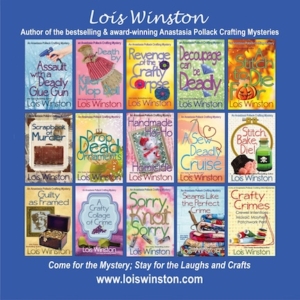 USA Today and Amazon bestselling author Lois Winston began her award-winning writing career with Talk Gertie to Me, a humorous fish-out-of-water novel about a small-town girl going off to the big city and the mother determined to bring her home to marry the boy next door. That was followed by the romantic suspense Love, Lies and a Double Shot of Deception.
USA Today and Amazon bestselling author Lois Winston began her award-winning writing career with Talk Gertie to Me, a humorous fish-out-of-water novel about a small-town girl going off to the big city and the mother determined to bring her home to marry the boy next door. That was followed by the romantic suspense Love, Lies and a Double Shot of Deception.
Then Lois’s writing segued unexpectedly into the world of humorous amateur sleuth mysteries, thanks to a conversation her agent had with an editor looking for craft-themed mysteries. In her day job, Lois was an award-winning craft and needlework designer, and although she’d never written a mystery—or had even thought about writing a mystery—her agent decided she was the perfect person to pen a series for this editor.
Thus, was born the Anastasia Pollack Crafting Mysteries, which Kirkus Reviews dubbed “North Jersey’s more mature answer to Stephanie Plum.” The series now includes fourteen novels and three novellas. Lois also writes the Empty Nest Mysteries and has written several standalone mystery novellas. Other publishing credits include romance, chick lit, and romantic suspense novels, a series of romance short stories, a children’s chapter book, and a nonfiction book on writing, inspired by her twelve years working as an associate at a literary agency. Her latest release is Seams Like the Perfect Crime, the fourteenth Anastasia Pollack Crafting Mystery.
Learn more about Lois and her books at www.loiswinston.com where you can find links for her other social media sites and sign up for her newsletter to receive a free download of an Anastasia Pollack Mini-Mystery.

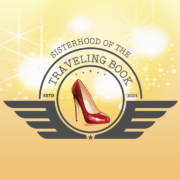
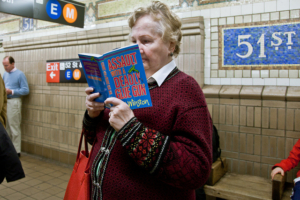 For my first Sisterhood of the Traveling Book post, I’m reaching back to 2012 for the best promo ever.
For my first Sisterhood of the Traveling Book post, I’m reaching back to 2012 for the best promo ever.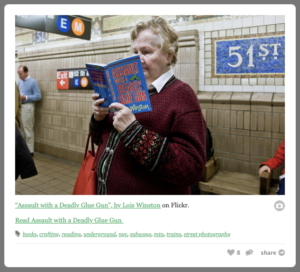
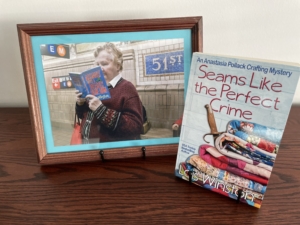 Now, fast-forward fourteen years from the January 2011 series debut to this month, which saw the release of
Now, fast-forward fourteen years from the January 2011 series debut to this month, which saw the release of 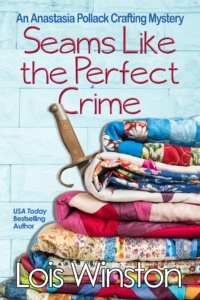 By Lois Winston
By Lois Winston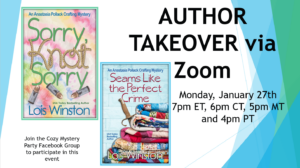 P.S.: On Monday evening, January 27th at 7pm ET (6pm CT, 5pm MT, and 4pm PT), I’ll be the guest of the Cozy Mystery Party Facebook Group, hosted by Heather Harrisson and Shawn Stevens. If you’d like to join in for a fun hour + of all things murder, mayhem, and cozy mysteries (there will be prizes and surprises!), join the group at
P.S.: On Monday evening, January 27th at 7pm ET (6pm CT, 5pm MT, and 4pm PT), I’ll be the guest of the Cozy Mystery Party Facebook Group, hosted by Heather Harrisson and Shawn Stevens. If you’d like to join in for a fun hour + of all things murder, mayhem, and cozy mysteries (there will be prizes and surprises!), join the group at 
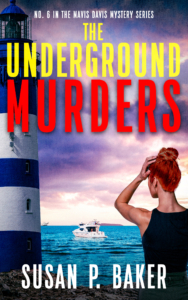


 hether or not I want to spend the time, I always read it aloud. And actually, I find so many things that need to be fixed that I’m pretty happy that I’ve read it aloud. Other writers say to let it sit awhile before you do that. I know I should wait awhile, but, actually, I don’t always wait awhile to read it. Whether or not you read your manuscript aloud, or print it out like we did in the old days, let it sit awhile, and then read it, I urge you to do one or the other, so you’ll be pretty happy, too.
hether or not I want to spend the time, I always read it aloud. And actually, I find so many things that need to be fixed that I’m pretty happy that I’ve read it aloud. Other writers say to let it sit awhile before you do that. I know I should wait awhile, but, actually, I don’t always wait awhile to read it. Whether or not you read your manuscript aloud, or print it out like we did in the old days, let it sit awhile, and then read it, I urge you to do one or the other, so you’ll be pretty happy, too.
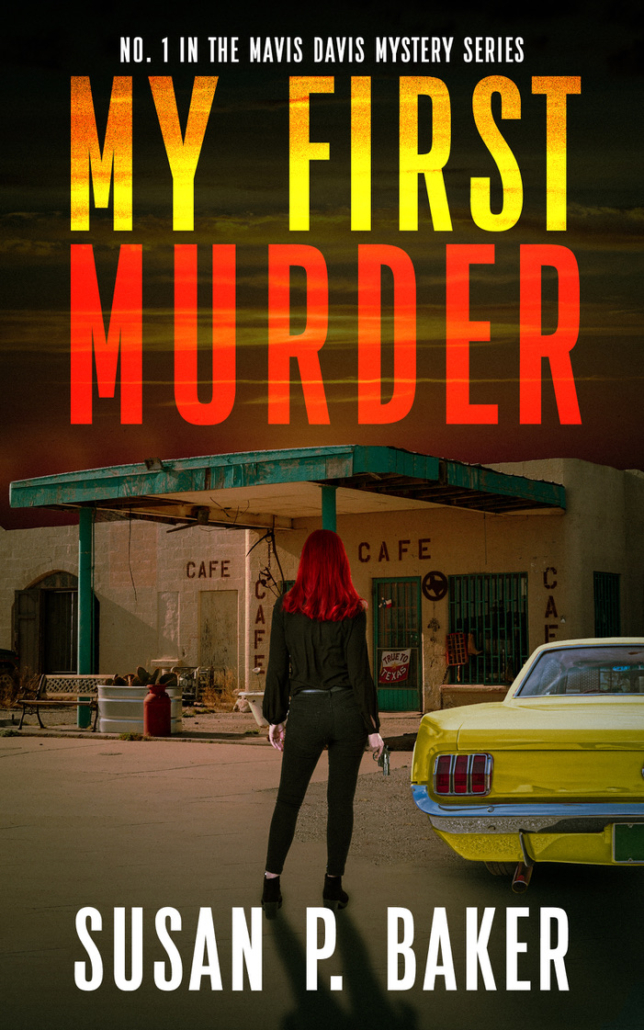
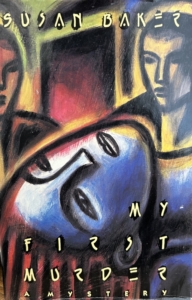
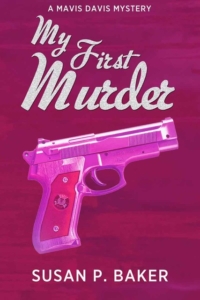
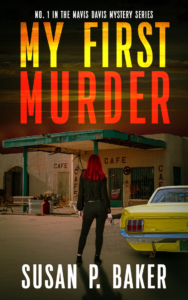

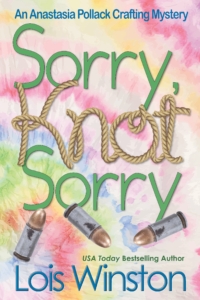
 The other day, I had reached a point in my current manuscript, the 13th book in my Anastasia Pollack Crafting Mystery Series, that had me stymied. I was more than two-thirds toward writing “The End.” I knew that I was at the point where I needed to return to one of the red herring threads that I’d left dangling in a much earlier chapter. I also knew what I wanted to have happen and to whom it should happen, but I found I was trying to shove the proverbial square peg into the round hole. No matter what I tried, the scene just wasn’t working.
The other day, I had reached a point in my current manuscript, the 13th book in my Anastasia Pollack Crafting Mystery Series, that had me stymied. I was more than two-thirds toward writing “The End.” I knew that I was at the point where I needed to return to one of the red herring threads that I’d left dangling in a much earlier chapter. I also knew what I wanted to have happen and to whom it should happen, but I found I was trying to shove the proverbial square peg into the round hole. No matter what I tried, the scene just wasn’t working.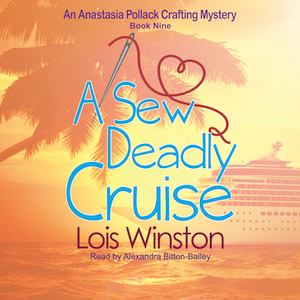 If you’re a reader, do you enjoy learning behind-the-scenes insights about the authors you read? If you’re a writer, do you have a critique partner or group you rely on for honest critiques of your work? Post a comment for a chance to win a promo code for a free audiobook download of A Sew Deadly Cruise, the ninth book in the Anastasia Pollack Crafting Mystery Series.
If you’re a reader, do you enjoy learning behind-the-scenes insights about the authors you read? If you’re a writer, do you have a critique partner or group you rely on for honest critiques of your work? Post a comment for a chance to win a promo code for a free audiobook download of A Sew Deadly Cruise, the ninth book in the Anastasia Pollack Crafting Mystery Series.